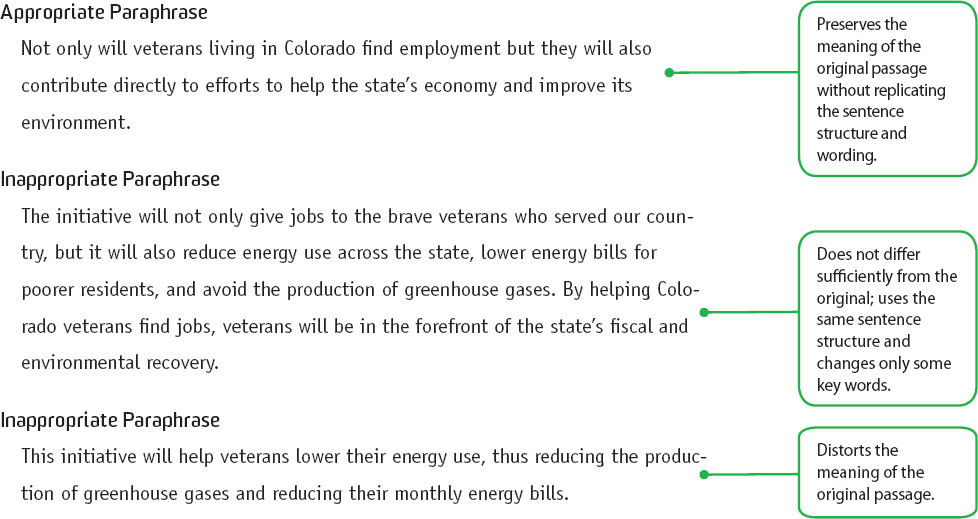Paraphrase
When you restate a passage from a source in your own words, you are paraphrasing. Using paraphrases in your notes serves three purposes. First, restating a passage in your own words can help you remember it better than if you simply copy and paste a quotation. Second, because paraphrases are written in your own words, they’re usually easier to understand later, when you’re drafting. Third, paraphrasing as you take notes will help you save time during drafting, particularly if you find — as many writers do — that you don’t want to rely exclusively on quotations from your sources.
Paraphrasing is a useful skill that takes practice. One of the most common problems writers have as they paraphrase is mirroring the source material too closely — that is, making such minor changes to the wording and sentence structure of a source that the paraphrase remains nearly identical to the original passage. Another common problem is distorting the meaning of the source.
Consider the differences among the original passage and the appropriate and inappropriate paraphrases.

When paraphrasing, focus on understanding the key ideas in the passage, and then restate them in your own words. Begin a paraphrase with the phrase “In other words.” This strategy reminds you that it’s important to do more than simply change a few words in the passage. In addition, you might want to set the original source aside while you paraphrase so that you won’t be tempted to copy sentences directly from it.
In your note, identify the author and title of the source, and list the page number (or paragraph number, if you are using a source that does not have page numbers) where the passage you have paraphrased can be found. After you’ve completed your paraphrase, check it for accuracy and ensure that the wording and sentence structure differ from the original passage.